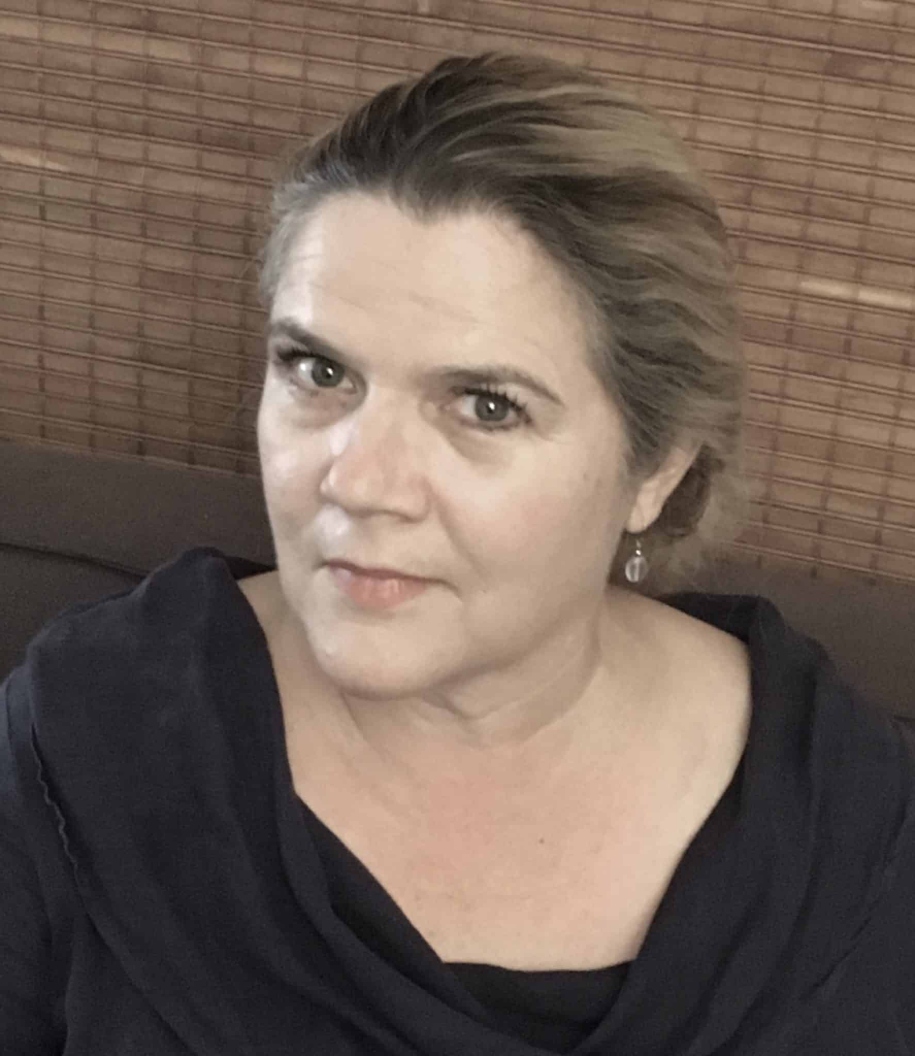To celebrate its fifth anniversary, Sightlines founder Jeanne Claire van Ryzin discusses the art magazine’s importance in the Austin community.
By Elle Bent, Photo courtesy of Jeanne Claire van Ryzin.
Jeanne Claire van Ryzin is a force to be reckoned with in the world of arts journalism. A graduate from Barnard College with a masters in creative writing from the University of Texas, van Ryzin is an award-winning journalist. She has received first place awards from the American Association of Sunday and Features Editors and the Texas Associated Press Managing Editors. Her writing has appeared in many publications including the New York Times and the Review of Contemporary Fiction.
“It’s something that’s been lifelong, and it’s always been a presence in my life,” she says of the arts. “Whether that’s participating in it, making it, observing it, it’s something that’s always just been front and center in my life.”
In 2017, van Ryzin founded the online arts publication Sightlines with her own savings after her position as arts critic and reporter for the Austin American Statesman was terminated.
“When my job was eliminated at the Statesman, I wasn’t willing to let go of what I was doing professionally,” she says. “Moreover, what I heard from the community is that a journalistic accounting of what was going on in the arts is what was really needed in Austin.”
Recently, van Ryzin was awarded the $50,000 Rabkin Prize for arts journalism from the Dorothea and Leo Rabkin Foundation, an artist-endowed charitable foundation that administers grant programs in the arts. She is one of eight journalists who have been awarded the prize. The foundation recognizing her as an essential arts journalist in Austin.
“The Rabkin Award is particularly focused on arts journalism for a wide, public audience. That’s what we’re doing,” she says. “I think getting the Rabkin Award spotlights that part of our mission.”
Sightlines is celebrating its five-year anniversary this month, boasting an annual readership of 400,000 readers in Texas and beyond.
The Sightlines mission mentions a “void left by media outlets” when it comes to professional arts and cultural journalism. What disparities are there in media outlets when it comes to arts journalism?

I think what happened is that media used to be more mainstream, when you’d have a daily newspaper that covered everything and was the undisputed record of what was going on in the community. It started to splinter with the advent of the internet. When that happened a lot of media outlets let go or diminished a lot of cultural coverage they’d done in the past. It wasn’t deemed as necessary. They still did a lot of entertainment and pop entertainment coverage because that garners a lot of attraction online. But topics of culture or arts that take a deeper understanding and take a bit more work to report on, those things were just not a priority. That’s evidenced by the way a lot of arts and culture journalists lost their jobs as traditional media, mainly newspapers, began to shrink their staff.
I can remember when I had peers, arts and culture reporters, at every major daily newspaper in Texas. By the time my job was eliminated in 2016, that wasn’t the case at all. It was very difficult to find peers at different publications. Even beyond the world of newspapers, many magazines, too, just did not consider it significant enough to have somebody dedicated to the fine arts. So the profession, as it was, seemed to be challenged.
What challenges have you faced launching the magazine?
The challenges were really that I didn’t have a huge amount of backing from a lot of donors. I think as a woman-owned effort, it was much more difficult to recruit interest in it. I didn’t have an “old boys” network or an equivalent of it to launch it. So I recruited a board, established a 501(c)(3) nonprofit organization and that’s how we launched Sightlines.
How does Sightlines accomplish its mission of an ongoing conversation about arts and culture?
We try to cover what is newest that’s going on in arts and culture. We use freelance writers who we recruit and pay. We try to look where the dialogue is and where the interesting things are going on. We’re not really trying to do what’s quick and flashiest. We’re not fond of listicles; we’re not fond of video content just for the sake of video content. We take a more thoughtful approach. We’re looking for things that haven’t been covered or topics that get overlooked by other media. We really want to put people front and center and artists front and center. They are the ones whose stories we want to be able to tell.


